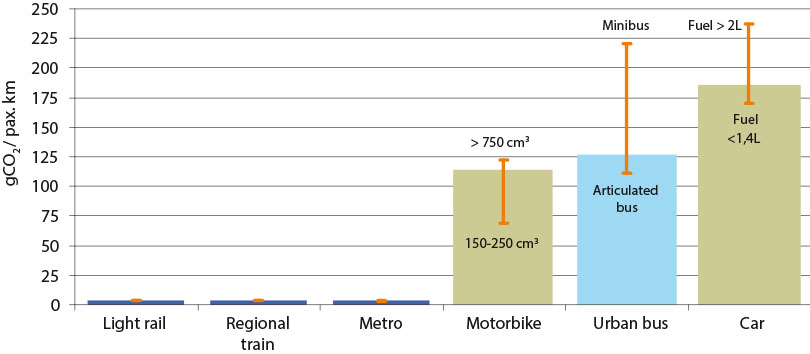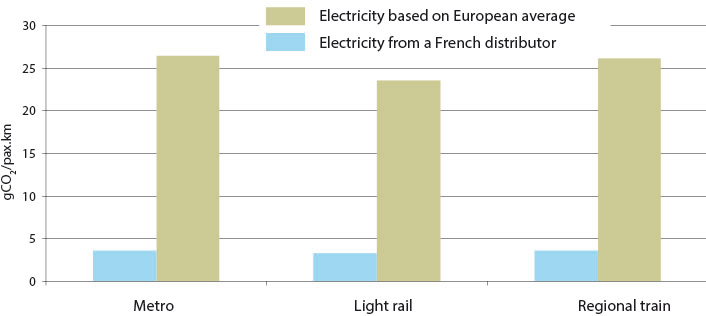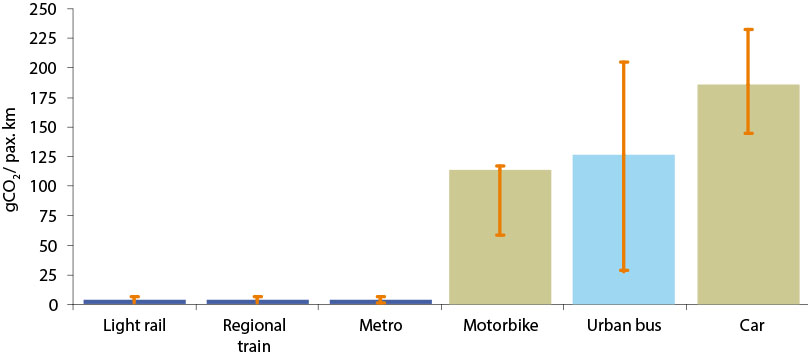Many studies have evaluated the emissions from the transport sector. However, most of them focused on road transport and only a few have estimated the emissions from public transport activities, particularly rail vehicles (metro and tram). A study carried out by DELOITTE in 2008 measured the carbon emissions from transport activities in France, expressed in CO2 equivalent.


Rail-guided vehicles perform the best in terms of emissions per passenger.kilometre. The occupancy rate of the vehicle linked to the size of the vehicle has a direct impact on the emissions per passenger.kilometre. Even when considering an occupancy rate of 15%, rail vehicles emissions per passenger.kilometre are still well below those of motorbikes with two passengers or those of buses and private cars with 75% of occupied seats. It is also worth noticing that an urban bus may produce in certain situations more carbon emissions per passenger.kilometre than private cars.
The source of the electricity used to supply urban rail vehicles is a determining factor in terms of emissions. The figure below shows for France the sensitivity of using another electricity source, in this case the average EU electricity mix.

Fig. 5 – Emissions of urban and peri-urban transport modes (in passenger.kilometres), DELOITTE, 2008

Fig. 6 – Variations in emissions due to the electricity source, DELOITTE, 2008

Rail-guided vehicles perform the best in terms of emissions per passenger.kilometre. The occupancy rate of the vehicle linked to the size of the vehicle has a direct impact on the emissions per passenger.kilometre. Even when considering an occupancy rate of 15%, rail vehicles emissions per passenger.kilometre are still well below those of motorbikes with two passengers or those of buses and private cars with 75% of occupied seats. It is also worth noticing that an urban bus may produce in certain situations more carbon emissions per passenger.kilometre than private cars.
The source of the electricity used to supply urban rail vehicles is a determining factor in terms of emissions. The figure below shows for France the sensitivity of using another electricity source, in this case the average EU electricity mix.
Fig. 7 – Impact of the occupancy rate on the emissions of the urban and peri-urban transport modes (in passenger.kilometres), DELOITTE, 2008

